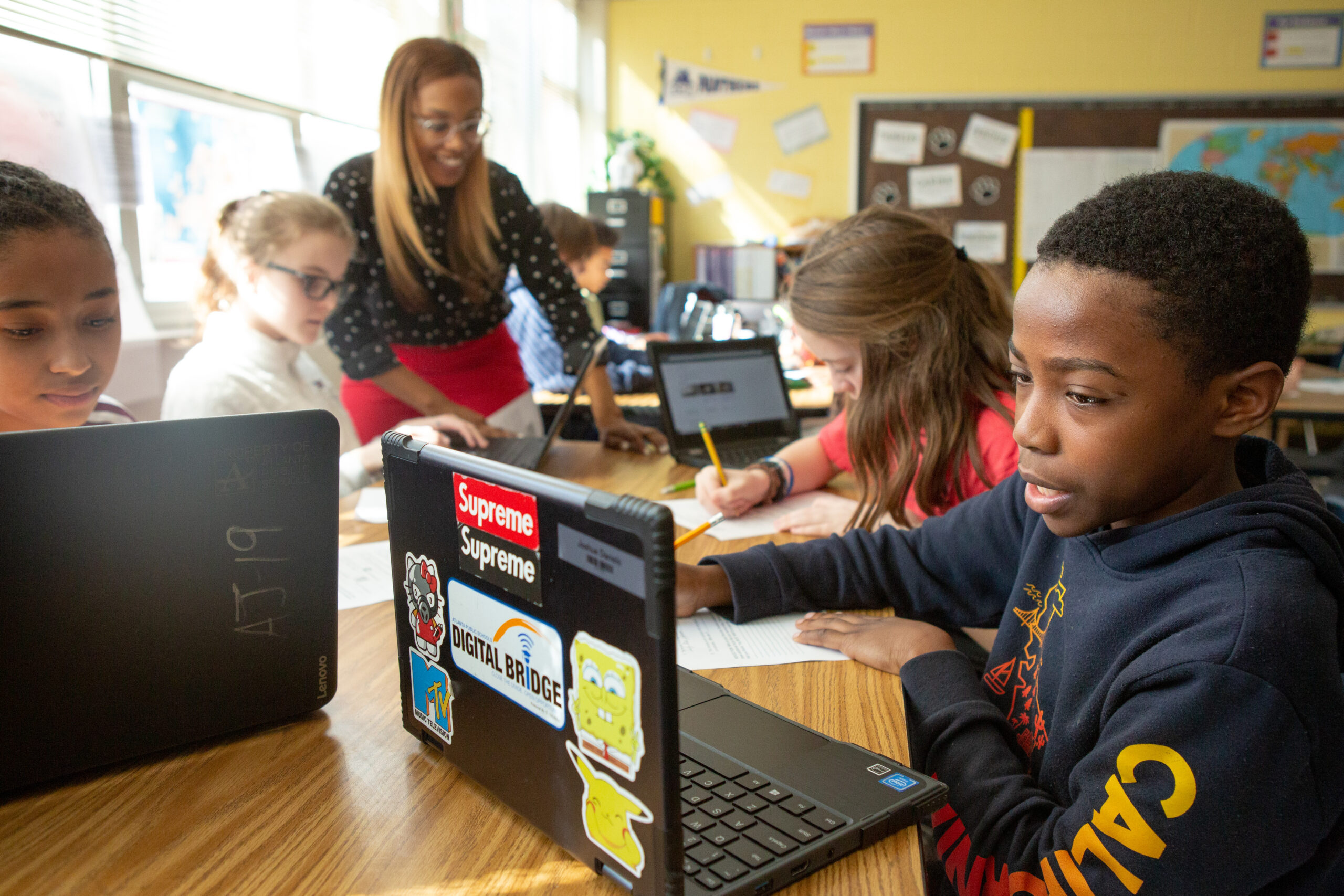By Sarah K. Burriss and EngageAI Staff
Key Ideas
- High school students created posters based on their (re)interpretations of the White House Blueprint for an AI Bill of Rights.
- Students were passionate about having a say in school surveillance and other uses of their data.
- EngageAI and partnering researchers will continue working with high school and middle school students to develop and share further student-centered documents about AI rights.
In late 2022, the White House released the Blueprint for an AI Bill of Rights. This document is an important first step in responding to the increasing presence and impact of AI systems in our daily lives, and we wanted to share and discuss it with students. In a lesson with middle graders a few months after its release, members of the research team led an activity for the students to make paper-and-marker posters to explain principles of the Blueprint to each other. During this activity, EngageAI researchers realized that the Blueprint was not designed with students–their needs, interests, and abilities–in mind. In the following research studies, we strove to rectify this, asking students to redesign principles and texts that incorporate their perspectives.
In June of 2023, approximately 50 high school students participated in a week-long AI Forum as part of their involvement in a science enrichment program. One of the Forum days was designated for learning about, then (re)designing around, the Blueprint. We asked students to think about how the current document might apply to their own lives and if/how it might miss things about their experiences as young people and students. With design support from a research partner, students created posters (examples pictured here) featuring their interpretations of principles from the Blueprint.
Two examples of student-created AI Bill of Rights posters, featuring interpretations of the Blueprint principles of “Human Alternatives, Consideration, and Fallback” and “Notice and Explanation.”
Students discussed how AI was present in their daily lives and in their schools, noting in particular the ways that schools used surveillance software, frequently without asking for student permission or offering explanations of how and where the technology/student data was used. Despite the Blueprint’s focus on rights linked to real-world harms, the students we worked with were consistently enthusiastic about their futures with AI and how it could serve them as learners and citizens.
Some of these students continued working with researchers when they returned to campus for the fall semester, creating their own video public service announcements featuring an AI ethics issue and/or a principle in the existing Blueprint, then sharing their creations with middle school students. We plan to continue this work with these and other middle and high school students to develop a full Bill of Rights text and materials, as well as sharing their creations and ideas with educators, in the coming year, so stay tuned for more AI Bill of Rights creations from young people.
- Stay tuned for our virtual exhibition hall, where you’ll find more student creations related to the Bill of Rights and AI ethics.
- EngageAI researchers and our Practioner Advisory Board are working to develop an AI Bill of Rights for Educators as well.
- For more on EngageAI perspectives on AI ethics, check out Jeremy Roscelle’s interview with Ole Molvig and Collin Lynch in this blog post.
Credits:
Special thanks to all of the amazing students for their participation in these projects; Dr. Kendra Oliver, for leading poster design over the summer and developing the virtual exhibit hall (coming soon!); Dr. Blaine Smith for supporting the multimodal composition process during the PSA creation; Dr. Yelena Doe and Dr. Zachary Conley for their support of the first activity that started this work; Dr. Nicole Hutchins for teaching and planning for AI ethics activities with middle school students; Rohit Kataria for support during the Forum; Dr. Angela Eeds, Dr. Menton Deweese, and Dr. Ana Villanueva for organizing the summer Forum and co-teaching and planning the PSA project.
This work was supported by the National Science Foundation under award DRL-2112635. Any opinions, findings, and conclusions or recommendations expressed in this material are those of the authors and do not necessarily reflect the views of the NSF.

